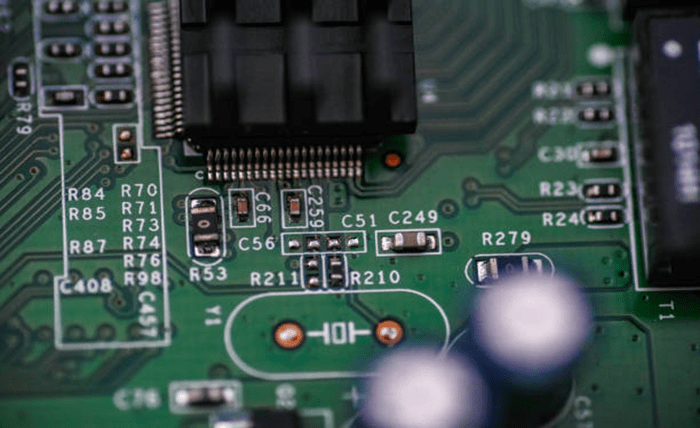In the realm of digital electronics, counters play a pivotal role in various applications, ranging from simple frequency measurements to complex event counting in industrial automation. Integrated Circuits (ICs) designed specifically for counting pulses, known as Counter ICs, have revolutionized how digital systems handle counting tasks. Beyond their fundamental purpose, Counter ICs find diverse applications across industries, driving innovations and enabling advanced functionalities. In this article, we delve into the world of Counter ICs, exploring their applications, innovations, and the impact they have on modern technology.
Understanding Counter ICs
Counter ICs are electronic devices engineered to count pulses or events occurring in a digital system. They operate by incrementing or decrementing a digital value based on the input signals received. These ICs typically consist of flip-flops, logic gates, and other components integrated onto a single chip, facilitating compactness and efficiency in design.
Features of Counter ICs:
- Multiple Counting Modes: Counter ICs offer various counting modes, including up, down, and up/down configurations, allowing flexibility in counting operations.
- Parallel and Serial Interfaces: Depending on the application requirements, Counter wholesale electronic parts distributor may feature parallel or serial interfaces for data input and output.
- Prescaler Functionality: Some Counter ICs incorporate prescaler circuits, enabling the division of input frequencies to accommodate a wide range of counting frequencies.
- Cascade Capability: Counter ICs can often be cascaded to achieve higher counting ranges or implement complex counting sequences.
- Synchronous and Asynchronous Counting: They support both synchronous and asynchronous counting methods, ensuring accurate counting in various timing scenarios.
Applications of Counter ICs
Counter ICs find extensive applications across diverse domains due to their versatility and reliability. Some prominent applications include:
1. Frequency Counters
In electronics and telecommunications, frequency counters utilize Counter ICs to measure the frequency of input signals accurately. They are integral in analyzing signal stability, troubleshooting circuitry, and validating the performance of oscillators and generators.
2. Industrial Automation
In industrial settings, Counter ICs play a crucial role in monitoring production processes, counting pulses from sensors, encoders, and other devices. They facilitate precise control and monitoring in tasks such as conveyor belt speed regulation, motor control, and batch counting.
3. Embedded Systems
Counter ICs are commonly integrated into embedded systems for tasks like event counting, timekeeping, and pulse-width modulation (PWM) generation. They enable microcontrollers to interface with external devices and accurately track timing and event occurrences.
4. Automotive Electronics
In automotive applications, Counter ICs contribute to vehicle instrumentation, speed measurement, and engine control systems. They help in monitoring vehicle speed, counting engine revolutions, and implementing timing functions critical for engine performance.
5. Consumer Electronics
In consumer electronics, Counter integrated circuit manufacturers are utilized in digital clocks, timers, and appliances requiring precise timing and event counting capabilities. They enhance the functionality and reliability of devices such as microwave ovens, washing machines, and digital cameras.
Innovations in Counter IC Technology
Advancements in semiconductor technology continue to drive innovations in Counter ICs, leading to enhanced performance, reduced power consumption, and integration of advanced features. Some notable innovations include:
- High-Speed Counting: Modern Counter ICs offer increased counting speeds, allowing for rapid processing of pulses and events in real-time applications.
- Low-Power Designs: Manufacturers are focusing on developing Counter ICs with low-power consumption, extending battery life and enabling energy-efficient operation in portable devices.
- Integration with Microcontrollers: Integration of Counter ICs with microcontrollers and System-on-Chip (SoC) solutions streamlines system design, reducing component count and improving overall system efficiency.
- Enhanced Resolution: Newer Counter ICs boast higher resolution and precision, enabling accurate counting and measurement of even the smallest pulse widths and frequencies.
- Advanced Communication Interfaces: Counter ICs featuring advanced communication protocols such as SPI (Serial Peripheral Interface) and I2C (Inter-Integrated Circuit) facilitate seamless integration into complex digital systems.
Conclusion
Counter ICs represent a cornerstone in digital electronics, offering robust counting capabilities essential for a myriad of applications. From industrial automation to consumer electronics, these versatile ICs continue to drive innovation and enable the development of advanced technologies. With ongoing advancements in semiconductor technology, Counter ICs are poised to play an increasingly pivotal role in shaping the future of digital systems, catering to evolving demands for accuracy, efficiency, and functionality. As we move forward, the integration of Counter ICs into diverse applications will continue to push the boundaries of what is possible in the realm of digital counting and beyond.

